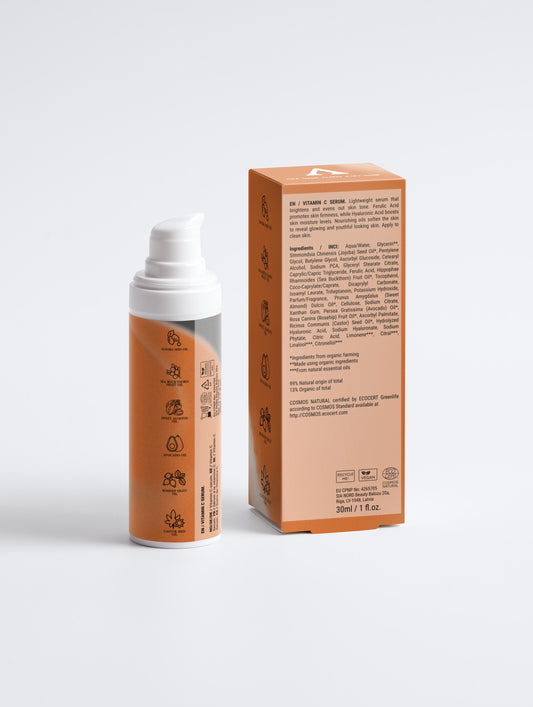
Mineral or Chemical Sunscreen? Comparison and which one to choose
Introduction
Sunscreen is an essential part of any skincare routine, protecting against ultraviolet (UV) radiation and preventing sunburn, premature aging, and skin cancer.
However, when choosing a sunscreen, one of the most common dilemmas is deciding between mineral and chemical formulations. Both types have distinct properties, advantages, and drawbacks, making it crucial to understand their differences before selecting the most suitable option for your skin type and lifestyle.
This article provides a detailed comparison of mineral and chemical sunscreens, discussing their mechanisms of action, effectiveness, safety, and ideal use cases to help you make an informed choice.
Understanding the Difference: How They Work
► Mineral Sunscreens (Physical Sunscreens)
Mineral sunscreens, also called physical sunscreens, use zinc oxide and/or titanium dioxide as their active ingredients. These compounds create a protective barrier on the skin’s surface, reflecting and scattering UV rays away before they can penetrate the skin.
- Mechanism of Action: Deflects and scatters UV radiation.
- Protection: Broad-spectrum protection against both UVA and UVB rays.
- Onset of Effectiveness: Immediate upon application.
► Chemical Sunscreens
Chemical sunscreens contain organic (carbon-based) compounds such as oxybenzone, avobenzone, octinoxate, octisalate, homosalate, and octocrylene. These ingredients absorb UV radiation, convert it into heat, and release it from the skin.
- Mechanism of Action: Absorbs UV rays and converts them into heat, which in turn makes you sweat leading to a dehydration of your skin that accelerates photoaging.
- Protection: Broad-spectrum, they always combine at least two UV filters to maximize protection.
- Onset of Effectiveness: Requires 15-30 minutes after application to become effective.
Pros and Cons of Each Type
Mineral Sunscreen
✅ Pros:
- Offers immediate protection after application, with no waiting time.
- Less likely to cause skin irritation, making it ideal for sensitive or acne-prone skin.
- Provides broad-spectrum coverage naturally. It sometimes may be combined with a small amount of chemical UV filter in order to achieve a synergic effect that helps achieve better protection against low-wavelength UVB radiation.
- More environmentally friendly, as zinc oxide and titanium dioxide are less harmful to marine life.
- More photostable - it does not degrade as quickly under sunlight, though the container must still be kept away from direct sources of heat or light.
- Adheres well to the skin, making it less likely to wash off quickly with water.
❌ Cons:
- Formulated with a thicker texture that may feel heavy or greasy, though the oils it contains often provide hydration by helping your skin retain its water.
Chemical Sunscreen
✅ Pros:
- Lightweight and easily spreadable.
- Transparent finish, leaving no white cast.
- Requires less product to achieve full coverage.
❌ Cons:
- Can cause skin irritation or allergic reactions, especially for sensitive skin.
- Some ingredients, like oxybenzone, are potential hormone disruptors and can trigger allergic responses.
- Requires waiting time after application to become effective.
- Can be less stable, meaning some filters degrade faster under prolonged sun exposure.
- Not reef-safe, as certain ingredients contribute to coral bleaching and environmental damage.
- Keep in mind that they always let some UVB get to your skin, Even an SPF100 will let about 3-4% of UVB get through because it is a necessary stimuli for our skin to begin producing more melanin in response to sun exposure.
Which One Should You Choose?
The choice between mineral and chemical sunscreen depends on several factors, including skin type, lifestyle, and personal preferences.
🔹 Best for Dry, Sensitive, Acne-Prone, or Rosacea-Prone Skin: Mineral sunscreen (gentler and less likely to irritate the skin).
🔹 Best for Darker Skin Tones: Chemical sunscreen (avoids white cast and blends seamlessly).
🔹 Best for Sports and Outdoor Activities: Chemical sunscreen (more water-resistant and sweat-proof formulations available).
🔹 Best for Daily Use Under Makeup: Chemical sunscreen (lighter texture and easier layering under cosmetics).
🔹 Best for Babies and Children: Mineral sunscreen (safer, less risk of irritation, and fewer concerns about absorption).
🔹 Best for Eco-Conscious People: Mineral sunscreen (safer for marine life and the environment).
Final Thoughts
Both mineral and chemical sunscreens offer effective UV protection, but the best choice depends on your specific needs. If you have sensitive skin or prioritize reef-safe products, mineral sunscreen is the better option. If you prefer a lighter texture, or want a transparent finish, chemical sunscreen might be more suitable.
Regardless of your choice, the most important factor is consistent sunscreen use. Apply a broad-spectrum SPF of at least 30 daily, reapply every two hours, and incorporate protective measures such as wearing hats, sunglasses, and seeking shade when necessary.
Key Takeaway: The best sunscreen is the one you’ll wear consistently. Choose based on your skin’s needs, and never skip sun protection.
By making an informed decision, you can protect your skin effectively and maintain long-term skin health.
At Vivotropic, we choose to go with a SPF30 Zinc Oxide Mineral Sunscreen, in order to be more environmentally conscious and provide your skin with better hydration while simultaneously protecting it more from photoaging. You can check it out in detail here








